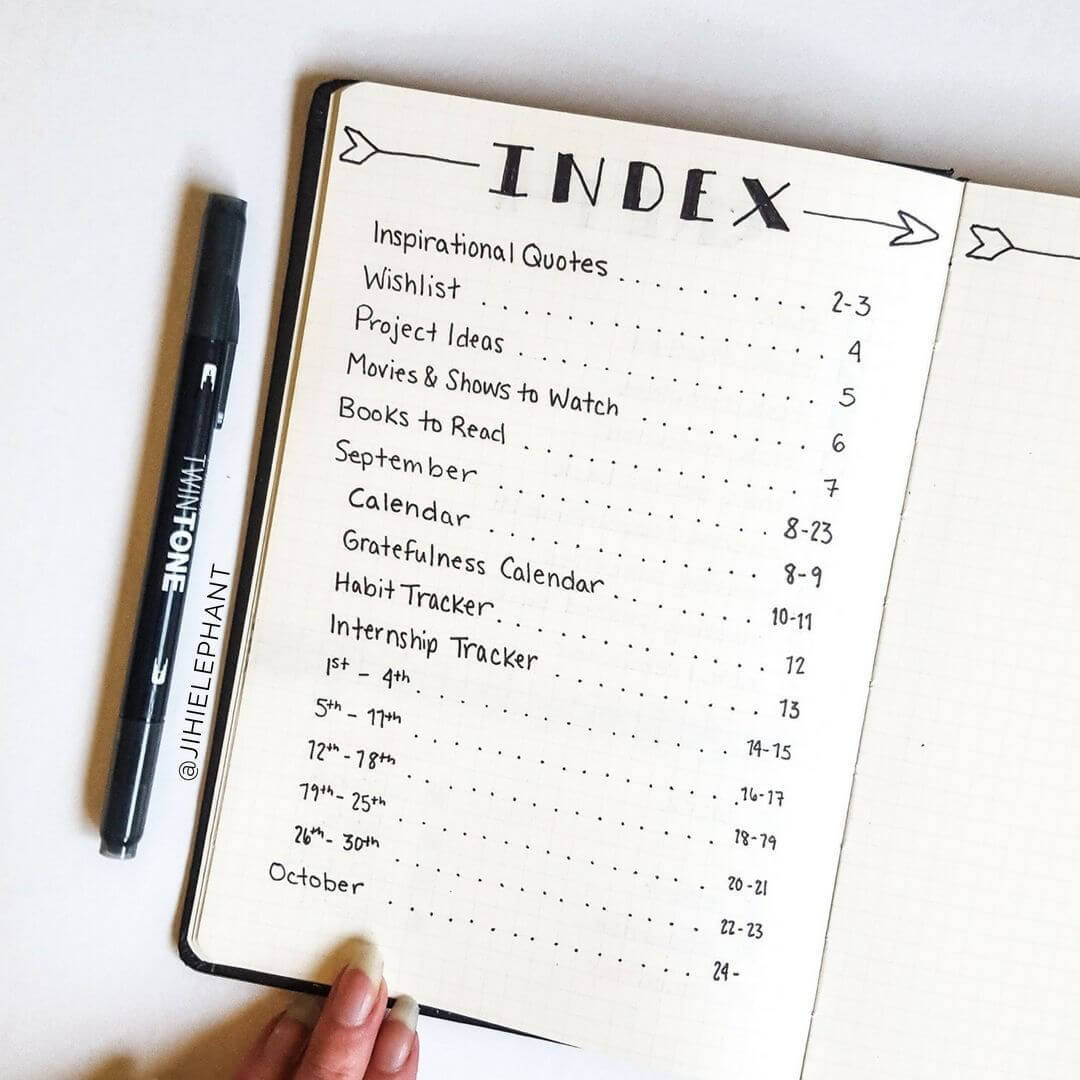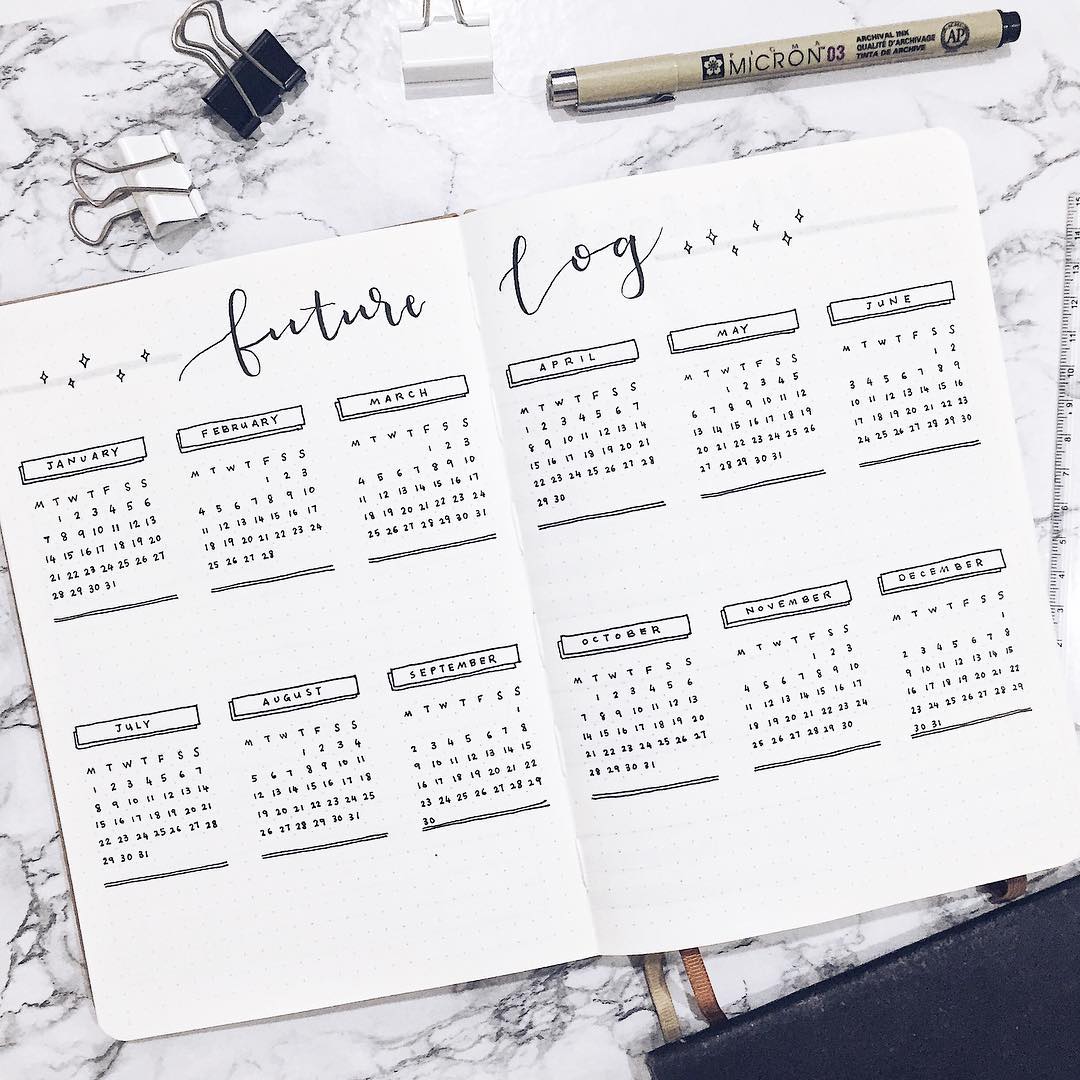Bullet journaling: What is it, how to start and does it actually make you more productive?

Chances are, you’ve probably come across the term ‘bullet journal’ multiple times over the years, whether it’s from one of your friends wanting to stay productive or spotting aesthetically-pleasing flatlays of bullet journal spreads all over Instagram.
With almost six million tags on Instagram, bullet journaling is the go-to organisational method for millennials and Gen-Zs to efficiently complete tasks. But the one question most beginners pose while jumping on this trend is: “Where do I begin?”
The good thing is—it’s not as complicated as you might think it is. If you’ve been looking for a way to create some order amidst the chaos (understandably, 2020 has been a stressful year for many), consider jumping on the BuJo (the shortened lingo for the productivity craze) bandwagon. Now is as good a time as any to start, and here’s a guide to this method.
What exactly is a bullet journal?
Bullet journaling is what the KonMari method is to the organisational community: a simple, concise way of sifting through the hodgepodge in life and optimising your way of living. So, who is the Marie Kondo counterpart behind the genius? Enter: Ryder Carroll. A designer based in New York, Carroll first started developing the BuJo system two decades ago during his adolescent years.

In an interview with The New Yorker, Carroll revealed that he was diagnosed with attention-deficit disorder (ADD) and had to learn alternative ways to stay focused and productive. What was born out of this was the bullet journal method that was picked up by productivity blogs and spawned a global community of “bullet journalists”.
The language of bullet journaling is called ‘rapid logging’, which captures information through quick-fire bullet point lists and shorthand notes where full sentences are traded for short keywords (hence the first half of its name).
You might be confused how the first half of the bullet journal method describes a speedy no-nonsense approach to productivity, while the other half suggests the exact opposite. But therein lies the beautiful contradiction that is the bullet journal. Unlike other standardised planners, bullet journaling allows for a more introspective approach to productivity that goes beyond just checking things off your to-do list.
The ‘journal’ aspect comes from the BuJo’s idea of self-reflection. In fact, Carroll describes his bullet journal method as “a mindfulness practice disguised as a productivity system” because it is designed to “help you organise your what while you remain mindful of your why”. By actively reflecting on each task you need to do on an everyday basis, the bullet journaling method is one of intentional living that is both “productive and meaningful”.
Read: 16 Must-read books to learn and live by
The BuJo Essentials
So, you understand the basis of bullet journaling and your interest is piqued—what now? Starting a BuJo can be a daunting task but all you really need to know are these core essentials (called “collections”).
Every BuJo should include these in the following order:



Basically a table of contents that goes on the first few pages of your journal. Firstly, number the pages of your chosen notebook (some might already be numbered). Every time you start a new collection, simply add the title of the collection and its corresponding page number to the index.



This spread works as a year-at-a-glance calendar with any future events, goals or long-term tasks outside of the current month. For example, events include birthdays, anniversaries, major holidays and the like are categorised here.

This traditional two-page facing spread consists of a birds-eye view of the current month and a task page. On the left margin, add the date and the first letter of the day, then record any meaningful events or tasks—entries here should be short for reference only. For the task page, it is a “monthly mental inventory” for tasks you want to get done this month but are not necessarily tied down to a specific date.

This is the heart of the bullet journal. This is your everyday to-do list. All you have to do is rapid log tasks, events and notes as they appear.
While it’s entirely up to you what keys you wish to use, Carroll recommends starting out with these:
- Tasks: •
- Events: O
- Notes (facts, random ideas, interesting observations): —
Signifiers are what gives your bullets more context. You add them on the left side of your keys. Here are some Carroll recommends but again, feel free to put your own spin on it:
- Priority: *
- Inspiration (quotes, insights, and ideas): !
There is also a term called ‘migration’ which Carroll calls the practice that differentiates being busy and being productive. When starting a new monthly log, revisit your previous monthly log to review which tasks you haven’t completed.
Think about whether that incomplete task is still worth your time and energy. If it is, change the task symbol from the “•” into “>” to indicate that you have moved the task to your new monthly log. If it’s not, strike it out.
We know it can seem time-consuming to repeatedly write the same tasks down, but all of this has a purpose towards the art of intentional living. As Carroll explains, this habit makes you pause and consider each item carefully. “The purpose of migration is to surface what’s worth the effort, become aware of our actions, and to separate the signal from the noise. This is where BuJo shifts from a system, into the practice.”
Read: 12 Inspiring podcasts to listen to for lifehacks, money advice and more
What tools do I need to start my BuJo?
It’s easy to get swept away by the intricate and colourful spreads on social media and think that that’s what your bullet journal should look like too. But really, all you need is a pen and any good ol’ notebook—one of the (many) notebooks you’ve hoarded over the years will do the job.
We suggest starting out with a nondescript notebook to dip your toes first (splurging on a leather-bound notebook might be too much of a commitment for some). If you’d like to invest in a good BuJo down the line, the Leuchtturm 1917 and Moleskine soft leather notebooks are popular choices amongst bullet journalists.
Next, your stationery. Any pen will do—gel, ballpoint, fountain; it’s entirely up to your preference. Tip: ensure that the notebook of your choice is not too big or small. In an interview with Huffington Post Australia, Carroll explains, “If it’s too big you’ll never take it with you. If it’s too small it will be impractical. Be sure to get something that’s rugged enough to keep up with you.”
bujo still has its flaws
While we’ve been raving about all the goodness bullet journaling can bring to your life, there’s no such thing as a perfect system, and even bullet journaling is not immune to this. Of course, the core of the bullet journal remains what it has promised to do: “Track the past, order the present, design the future”.
However, with the rise of social media and the importance of aesthetics, the creative community has taken the bullet journal method and run with it. The BuJo has gone through tremendous change over the years, with many now associating the minimalistic methodology to highly stylised spreads of calligraphy, fancy washi tape stickers and complex doodles: bullet journaling has morphed into an art form.
For the artistically challenged, this can pose a huge concern when starting out in the BuJo community. In fact, many have left because they did not feel their bullet journal was as ‘pretty’ or as ‘put together’ as the ones they’ve seen on the Internet.
While it’s not wrong for people to want to spend time over their carefully crafted spreads, this “form over function” mentality is actually contradicting what the bullet journal method calls for. We’re for adding a smattering of doodles and stickers in your BuJo, but don’t feel pressured to cave in if that’s not what you want to do.
Carroll understands this rising issue as well and reminds us, “There are a lot of very beautiful and elaborate bullet journals out there on Instagram. This can be very intimidating. It’s not about how your bullet journal looks, it’s about how effective it is.”
If we are to live intentionally then we must also embrace the imperfections that come with it—there will be times when you accidentally make a mistake and need to cross it out or start a new spread because you didn’t leave enough space; that’s totally fine and not something to be ashamed of! After all, the bullet journal is a “system designed to embrace your ‘imperfections’”.
Remember, your bullet journal is whatever you want it to be—not what you see others use it as on social media. This journey to betterment is yours and yours only.
Now that you have all the essentials you need, what are you waiting for? Time to create some magic and kickstart your new BuJo-urney!
Check out more lifestyle insiders, tips and tricks here.
| SHARE THE STORY | |
| Explore More |



